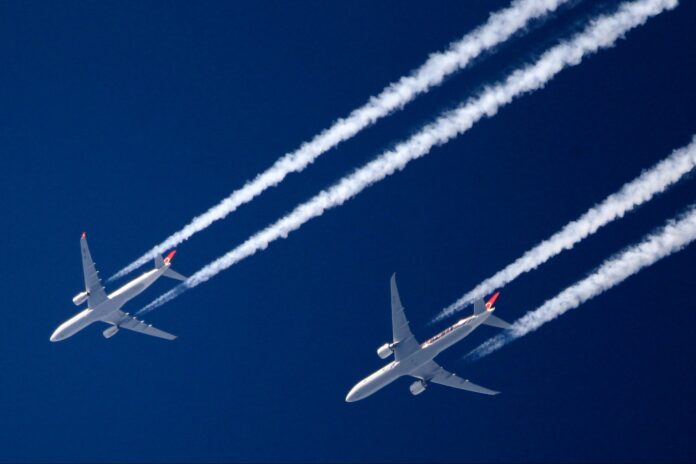What are those puffy white feathers trailing jets high up in the sky? They’re called contrails, and scientists have long said they contribute to climate change.
Now some big airlines are getting on board. Transportation companies like American, Southwest, United, Alaska, and Virgin Atlantic, and technology companies like Google, are working with the Rocky Mountain Institute to find out which of these contrails are bad for the environment and what to do about them.
“Air travel has almost twice the impact on global warming than we previously thought,” Andrew Chen, an aviation specialist at the Rocky Mountain Institute, told The Dallas Morning News. “The most interesting dynamic is that airlines don’t shy away from contrails.”
See Also: “The Fumes Are Incredibly Bad:” Local Residents Complain About Kyle Jenner’s Private Jet
What are airplane contrails?
There are numerous conspiracies that the cloud lines that jets follow are “chemtrails” released by the government in a secret program to add toxic chemicals to the atmosphere.
However, scientists say these clouds are actually water vapor or contrails (contrails for short) created by airplane engines. The hot, humid exhaust gases mix with the colder atmosphere, creating a cloud similar to what you see when you breathe on a cold day.
Climate scientists believe contrails can trap heat in the atmosphere, contributing to global warming.
Jet CO2 emissions have long been a concern of environmentalists, prompting many airlines to convert their planes to use alternative energy. But the industry is now also serious about contrail pollution.
“The science surrounding contrails has become clearer in recent years,” Jill Blickstein, vice president of sustainability at American Airlines, told DMN. “For example, we have known for some time that some contrails formed in the morning can have a cooling effect and that contrails formed at night tend to have a warming effect. But we didn’t have a good sense of the net impact of all contrails. This warming effect has become more evident recently.”
Not all contrails have the same effect. The worst seems to happen at night when the earth is cooler, but the contrails prevent heat from escaping.
The good news is that airlines can avoid creating contrails, but doing so may require changing flight patterns and using more fuel, thereby creating more carbon dioxide.
To read more about it, visit the Dallas Morning News.














